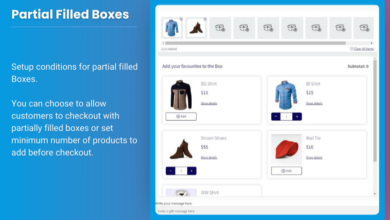
In a world where digital transformation is not just an option but a necessity, mastering ServiceNow’s Certified Technical Architect (CTA) certification can be your golden ticket to accelerating career success. Picture this: you’re leading your organization’s IT initiatives, streamlining processes, and driving innovation—all while being the go-to expert in one of the most coveted platforms in enterprise service management. But how do you get there? This ultimate guide will unravel the complexities of becoming a ServiceNow CTA, equipping you with essential insights and strategies that can set you apart in today’s competitive landscape.
From understanding the intricacies of architecture design to navigating real-world implementation challenges, we’ll explore each critical component that contributes to mastering this powerful credential. Whether you’re an aspiring architect or a seasoned professional looking to sharpen your skills, our comprehensive roadmap will provide actionable tips and resources tailored for immediate impact. Get ready to embark ServiceNow CTA Training on a transformative journey that not only enhances your technical prowess but also positions you as an invaluable asset within any organization!
Understanding ServiceNow CTA Importance
The importance of understanding ServiceNow Certified Technical Architect (CTA) roles cannot be overstated in today’s rapidly evolving digital landscape. As organizations increasingly rely on comprehensive IT service management solutions, the CTA acts as a linchpin, bridging the gap between technical execution and strategic vision. A well-versed CTA possesses a deep knowledge of both governance and best practices that ensures implementations are not only effective but also aligned with business objectives.
Moreover, the CTA’s expertise enables organizations to harness the full potential of ServiceNow applications, driving innovation and operational efficiency. By crafting tailored architectures that integrate seamlessly with existing processes, CTAs empower teams to maximize their resource allocation while minimizing downtime and inefficiencies. Understanding this role equips professionals with a clearer picture of how skilled architects can lead transformation initiatives that deliver measurable value across departments and stakeholders alike—ultimately fostering a culture of continuous improvement within enterprises.
What is ServiceNow and Its Benefits?
ServiceNow is a powerful cloud-based platform designed to streamline and automate IT service management (ITSM) processes, but its capabilities extend far beyond IT. By integrating various business functions into a single platform, ServiceNow transforms the way organizations across sectors handle operations. From incident management to human resources and customer service, it allows for seamless workflows that can significantly enhance productivity and efficiency.
One of the standout benefits of ServiceNow lies in its ability to provide real-time insights through advanced analytics and reporting features. Organizations can leverage these insights to identify patterns, optimize resource allocation, and drive strategic decision-making. Furthermore, the platform’s user-friendly interface not only enhances employee experience but also fosters collaboration between departments—breaking down silos that often hinder organizational growth. As companies adapt to an ever-evolving landscape, ServiceNow emerges as a critical ally in fostering agility and resilience in business operations.
Overview of the Certified Technical Architect Role
The Certified Technical Architect (CTA) role in the ServiceNow ecosystem is not just a job title; it’s a manifestation of expertise that bridges technical mastery with strategic vision. A CTA is charged with architecting scalable and robust solutions tailored to an organization’s unique needs while ensuring alignment with industry best practices. This role demands more than just technical skills; it requires a profound understanding of business processes, enabling architects to translate complex requirements into solution designs that drive value and efficiency.
One of the most intriguing aspects of being a CTA is the constant evolution of technology and market demands. Architects must stay ahead of emerging trends—such as AI integration, machine learning capabilities, and cloud strategies—to craft forward-thinking architectures that can adapt over time. This dynamic environment challenges CTAs to become lifelong learners who can inspire teams and stakeholders across various departments. Additionally, their ability to communicate effectively within cross-functional teams makes them invaluable assets when managing change or implementing innovative solutions in large organizations.
Ultimately, the Certified Technical Architect isn’t simply an implementation expert but rather a crucial part of an organization’s transformation journey. By mastering not only the technical framework but also project governance and stakeholder management, CTAs empower businesses to unlock ServiceNow’s full potential—transforming operational workflows into streamlined success stories that resonate throughout the enterprise landscape.
Key Skills for ServiceNow CTAs
A successful ServiceNow Certified Technical Architect (CTA) must possess a unique blend of technical acumen and soft skills that distinguish them in the field. First and foremost, deep proficiency in ServiceNow’s platform is essential; CTAs need to understand not just the architecture but also how various components integrate seamlessly. This requires hands-on experience with modules like ITSM, ITOM, and custom application development, ensuring they can design solutions that meet business needs while optimizing performance.
But technical ability alone isn’t enough. Strong communication skills are vital for bridging the gap between stakeholders—translating complex technical concepts into actionable insights for business leaders makes or breaks project success. Moreover, a CTA should be an exceptional problem-solver, anticipating challenges before they arise and adopting a proactive approach to troubleshooting. As organizations increasingly embrace digital transformation, adaptability becomes another key trait; CTAs must stay informed about emerging technologies and industry trends to evolve their strategies continuously and deliver innovative solutions tailored to specific organizational challenges.
Common Mistakes to Avoid as a CTA
One of the most prevalent mistakes that CTAs make is underestimating the importance of stakeholder engagement. Failing to build robust relationships with key stakeholders can lead to misalignment between project goals and business needs. A successful CTA must proactively involve stakeholders throughout the journey, from gathering requirements to finalizing solutions. This not only fosters trust but also ensures that everyone is on the same page, ultimately enhancing buy-in and reducing resistance to change.
Another common pitfall is neglecting continuous learning and adaptability in a fast-evolving environment like ServiceNow. The platform continually updates its features and capabilities; therefore, a CTA must prioritize staying informed about new functionalities, industry trends, and emerging best practices. Ignoring this aspect can result in outdated strategies that fail to leverage ServiceNow’s full potential, compromising both efficiency and innovation. Moreover, instilling a culture of collaboration within teams cultivates a mindset open to experimentation and growth—crucial components for long-term success in any service management initiative.
Continuous Learning and Career Advancement Strategies
In the fast-paced world of technology, particularly in platforms like ServiceNow, continuous learning isn’t just an option; it’s a prerequisite for sustained success. Embracing a mindset of lifelong learning enables professionals to stay ahead of industry trends and innovations, which is crucial for career advancement. Consider leveraging diverse resources such as online courses, workshops, and webinars that focus on emerging features within ServiceNow and related tools. Engaging with online communities or forums can also provide insights into real-world applications of your skills while fostering valuable professional connections.
Moreover, pursue certifications not merely as credentials but as stepping stones toward deeper expertise in niche areas. Think beyond traditional paths—explore mentoring opportunities where you can both impart knowledge and learn from seasoned experts simultaneously. This reciprocal exchange fosters a culture of growth and opens doors to unique career opportunities. By actively seeking feedback from peers and utilizing it constructively, you’ll refine your skill set further, allowing you to adapt quickly to the ever-evolving demands of the IT landscape. Every experience becomes a tool for mastery—an essential concept in mastering ServiceNow CTA effectively!
Conclusion:
In conclusion, mastering ServiceNow’s Certified Technical Architect (CTA) role is not just about accumulating certifications or technical knowledge; it’s about embracing a mindset of continuous improvement and adaptability. As businesses increasingly lean into digital transformation, the CTA’s ability to anticipate needs and architect forward-thinking solutions becomes critical. This goes beyond merely being proficient in the platform; it requires an acute awareness of industry trends, user behaviors, and organizational dynamics that drive decision-making.
Furthermore, collaboration stands as a cornerstone for success in the CTA role. Engaging effectively with cross-functional teams fosters innovation and ensures that solutions are aligned with real-world challenges. By cultivating strong communication skills and encouraging open dialogue among stakeholders, you position yourself not just as a technician but as a strategic partner within your organization. In this rapidly evolving landscape of IT service management, those who can blend technical prowess with empathetic leadership will emerge as invaluable assets—paving their way to extraordinary career achievements within the ServiceNow ecosystem.





